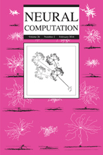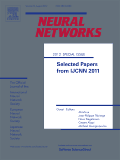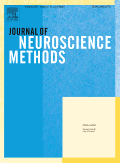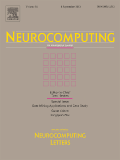
NEURAL COMPUTATION
Scope & Guideline
Exploring the dynamic interplay between neurons and algorithms.
Introduction
Aims and Scopes
- Neural Network Theory and Models:
Research in this area encompasses the theoretical foundations and mathematical models of neural networks, including spiking neural networks, deep learning architectures, and their dynamics. - Biologically-Inspired Computing:
This scope includes studies that draw inspiration from biological systems to develop computational models, exploring concepts such as synaptic plasticity, neural coding, and brain-like architectures. - Machine Learning and Optimization Techniques:
Focus on the development of new algorithms and optimization techniques applicable to neural networks and machine learning, including reinforcement learning, variational inference, and Bayesian methods. - Data-Driven Neuroscience:
Research that applies machine learning techniques to analyze and interpret neural data, such as fMRI, EEG, and other neuroimaging modalities, to derive insights into brain function. - Cognitive Neuroscience Applications:
Exploration of how neural computation can inform and enhance understanding of cognitive processes, including perception, memory, decision-making, and learning. - Neuroinformatics and Computational Neuroscience:
Developments in computational models that simulate biological neural systems, aiming to provide insights into neural mechanisms and functions.
Trending and Emerging
- Adversarial Robustness and Security in Neural Networks:
There is a growing emphasis on enhancing the robustness of neural networks against adversarial attacks, reflecting the increasing relevance of security in AI applications. - Integration of Neuroscience and AI:
A notable trend is the intersection of neuroscience research with AI development, where insights from biological systems inform the design of more efficient algorithms and models. - Spiking Neural Networks and Neuromorphic Computing:
Research into spiking neural networks and neuromorphic computing architectures is on the rise, focusing on energy-efficient computations that mimic brain activity. - Explainable AI and Interpretability:
There is an increasing interest in making neural network models more interpretable and explainable, addressing concerns about the black-box nature of deep learning. - Multimodal Learning and Integration:
Emerging themes include the integration of multiple data types (e.g., visual, auditory, sensory) to create more holistic models of cognition and perception. - Dynamic and Adaptive Learning Systems:
Research is trending towards systems that can adaptively learn in changing environments, reflecting the need for models that can generalize across different contexts.
Declining or Waning
- Traditional Neural Network Architectures:
Research on older neural network architectures, such as simple feedforward networks, appears to be waning as the field shifts towards more complex and biologically plausible models. - Overly Theoretical Approaches:
There has been a noticeable decrease in purely theoretical papers that do not incorporate empirical validation or practical applications, as researchers increasingly seek tangible implications for neuroscience and AI. - Basic Image Processing Applications:
The focus on basic image processing tasks using neural networks has diminished, with a trend towards more complex applications involving higher-level cognitive functions and multimodal data.
Similar Journals

NEURAL COMPUTING & APPLICATIONS
Transforming Ideas into Impactful ApplicationsNEURAL COMPUTING & APPLICATIONS is a premier journal dedicated to the burgeoning fields of Artificial Intelligence and Software Engineering, published by Springer London Ltd. Established in 1993, the journal serves as a pivotal platform for disseminating cutting-edge research and innovative applications in neural computing, covering a broad range of topics from algorithm development to real-world applications. With its impressive categorization in the 2023 Journal Quartiles—ranging Q2 in Artificial Intelligence and Q1 in Software—it stands out in its discipline, ranking 42nd out of 407 in Computer Science Software and 50th out of 350 in Computer Science Artificial Intelligence, reflecting its significant impact in the academic community. Although not an open access journal, it provides vital access to significant findings and methodologies that drive advancements in technology. Researchers, professionals, and students looking to stay abreast of the most relevant and impactful developments in these fields will find NEURAL COMPUTING & APPLICATIONS an indispensable resource.

NEURAL PROCESSING LETTERS
Pioneering Research in Artificial Intelligence and Neuroscience.NEURAL PROCESSING LETTERS, published by Springer, is a prestigious journal dedicated to the interdisciplinary fields of Artificial Intelligence, Computer Networks and Communications, Software Engineering, and Neuroscience. Established in 1994, the journal has built a solid reputation over the past decades, showcasing innovative research and developments that significantly contribute to the advancement of these dynamic areas. With a 2023 Scopus quartile ranking of Q2 in Artificial Intelligence and Computer Networks and Communications, and a Q3 ranking in Neuroscience, this journal occupies an important niche for professionals and researchers alike. The journal’s impact is further evidenced by its competitive Scopus ranks, positioning it within the top 60th percentile across its categories. Researchers looking for a platform to disseminate their findings in the intersection of technology and neuroscience will find NEURAL PROCESSING LETTERS an invaluable resource. For additional engagement and visibility, the journal supports various access options; however, it's important to note that it does not currently operate under an open access model. For submissions or queries, the journal can be reached at its headquarters in Dordrecht, Netherlands.

JOURNAL OF COGNITIVE NEUROSCIENCE
Pioneering insights into cognitive processes.Welcome to the JOURNAL OF COGNITIVE NEUROSCIENCE, a premier publication in the field of cognitive neuroscience, published by the esteemed MIT PRESS. Since its inception in 1989, this journal has been at the forefront of advancing our understanding of the neural mechanisms underlying cognitive processes, boasting an impressive convergence period through 2024. With its Q1 ranking in the 2023 cognitive neuroscience category, it stands out among 115 peers, indicating its critical role in shaping contemporary research. The journal offers a comprehensive array of research articles, reviews, and methodologies aimed at researchers, professionals, and students alike, facilitating the exploration of complex cognitive functions. While not an open-access journal, it provides essential insights and significant contributions to the neuroscience community, making it an invaluable resource for anyone keen on delving into the intricacies of the human brain.

NEURAL NETWORKS
Pioneering Research at the Intersection of Mind and MachineNEURAL NETWORKS, an esteemed journal with the ISSN 0893-6080 and E-ISSN 1879-2782, is published by Pergamon-Elsevier Science Ltd in the United Kingdom. This influential journal, established in 1988 and continuing its publication through 2024, is recognized for its significant contributions to the fields of Artificial Intelligence and Cognitive Neuroscience, ranking in the Q1 category in both disciplines as of 2023. With a strong Scopus rank of #4/115 in Cognitive Neuroscience and #35/350 in Artificial Intelligence, and a commendable percentile of 96th and 90th respectively, NEURAL NETWORKS stands at the forefront of academic research. Researchers, professionals, and students can benefit from the journal's rigorous peer-review process and the dissemination of groundbreaking findings that shape understanding in artificial intelligence methodologies and their cognitive applications. While the journal currently operates under traditional access options, it serves as a vital resource in fostering innovations and cross-disciplinary collaboration.

Frontiers in Synaptic Neuroscience
Connecting minds through open-access research in synaptic neuroscience.Frontiers in Synaptic Neuroscience, published by FRONTIERS MEDIA SA, is a leading open-access journal that has been at the forefront of advancing knowledge in the fields of neuroscience and cellular biology since its inception in 2010. With an ISSN and E-ISSN of 1663-3563, this journal aims to disseminate high-quality research focused on the structural and functional mechanisms of synapses and their role in neural communication. The journal's reputation is underscored by its impressive standing in the academic community, evidenced by its 2023 category quartiles: Q2 in Cell Biology and Q1 in Cellular and Molecular Neuroscience. It holds a noteworthy position within Scopus ranks, being placed 35th out of 97 in its primary category, showcasing its relevance to both established and emerging researchers in the field. Operating from its office in Lausanne, Switzerland, this journal fosters collaboration and knowledge exchange while supporting the principles of open access, allowing wide dissemination and accessibility of groundbreaking research. With a converged publication timeline extending from 2009 to 2024, Frontiers in Synaptic Neuroscience continues to be an invaluable resource for professionals and students alike, eager to explore the complexities of synaptic function and its implications for neural networks.

NATURE REVIEWS NEUROSCIENCE
Advancing the frontiers of neurological science.NATURE REVIEWS NEUROSCIENCE is a prestigious journal published by NATURE PORTFOLIO, renowned for its commitment to advancing the field of neuroscience. Since its inception in 2000, it has become a significant platform for disseminating comprehensive reviews and insights that shape the understanding of neurological science. With an impressive Scopus ranking of #2 out of 113 in the General Neuroscience category, this journal consistently engages the top 2% of researchers and professionals in the field, underscoring its impactful contributions. The journal not only provides a forum for high-quality reviews but also bridges emerging research trends with established knowledge, fostering a robust discourse among scholars and practitioners. As a Q1 journal in Neuroscience (miscellaneous), NATURE REVIEWS NEUROSCIENCE offers invaluable access to critical research developments, making it an essential resource for students, researchers, and professionals aiming to stay at the forefront of neuroscience advancements. Explore the latest findings and engage with a global community dedicated to unraveling the complexities of the nervous system.

NEUROBIOLOGY OF LEARNING AND MEMORY
Charting New Territories in Cognitive NeuroscienceNeurobiology of Learning and Memory is a prestigious journal dedicated to the exploration of the neural mechanisms underlying learning and memory processes. Published by Academic Press Inc Elsevier Science, this journal boasts a strong reputation within the field, as evidenced by its impressive impact factor and high quartile rankings in multiple categories, including Q1 in Behavioral Neuroscience and Q2 in Cognitive Neuroscience. Having provided a platform for groundbreaking research since its inception in 1995, the journal aims to disseminate influential findings that further our understanding of cognitive processes, shaped by robust empirical studies and theoretical developments. Researchers and professionals in neuroscience, psychology, and related disciplines will find invaluable insights and advancements that underscore the journal's commitment to fostering knowledge and innovation within these fields. While it currently operates under a subscription model, its comprehensive coverage of crucial topics positions it as a vital resource for those engaged in the intricate study of learning and memory.

JOURNAL OF NEUROSCIENCE METHODS
Innovating the Future of Neuroscience MethodologiesWelcome to the JOURNAL OF NEUROSCIENCE METHODS, a prestigious platform for disseminating innovative methodologies in the interdisciplinary field of neuroscience. Published by Elsevier, this journal has been pivotal since its inception in 1979, covering a diverse range of experimental techniques and methods aimed at advancing our understanding of neural systems and functions. With a commendable impact factor and classified within the Q2 category in Neuroscience (miscellaneous) as of 2023, the journal continues to attract high-quality research from professionals, scholars, and students alike. While maintaining a robust subscription model, it provides unparalleled access to groundbreaking studies, fostering collaboration and knowledge exchange among the global neuroscience community. Join us as we explore and contribute to the evolution of neuroscience methodologies through rigorous research and comprehensive reviews, setting the stage for future discoveries.

Neurophotonics
Harnessing Light to Illuminate the MindNeurophotonics is a leading Open Access journal published by SPIE-SOC PHOTO-OPTICAL INSTRUMENTATION ENGINEERS, focusing on the intersection of neuroscience and photonics. Launched in 2014, this journal has rapidly ascended to achieve Q1 rankings in several categories, including Neuroscience (miscellaneous), Radiological and Ultrasound Technology, and Radiology, Nuclear Medicine and Imaging, showcasing its significant impact within these fields. With an impressive Scopus ranking of #6 in Neuroscience and #12 in Radiological and Ultrasound Technology, Neurophotonics provides a vital forum for researchers, professionals, and students dedicated to advances in optical imaging and monitoring techniques for brain research and related applications. The journal is committed to disseminating high-quality research, insights, and innovations that drive forward the understanding of neural mechanisms through light-based techniques. Accessible since 2019, it promotes wider dissemination of knowledge, making it a crucial resource for those exploring the dynamic interplay between neuroscience and optical technologies.

NEUROCOMPUTING
Pioneering Research in Neural and Computational FrontiersNEUROCOMPUTING is a premier academic journal published by ELSEVIER, specializing in the interdisciplinary fields of Artificial Intelligence, Cognitive Neuroscience, and Computer Science Applications. With an impressive impact factor and a Q1 ranking in its relevant categories for 2023, NEUROCOMPUTING is recognized as a leader in fostering innovative research and providing a platform for ground-breaking studies. The journal’s scope covers the convergence of neural computation and artificial intelligence, making it essential reading for researchers and professionals seeking to explore the latest advancements and applications in these dynamic fields. For those interested in the cutting-edge intersection of neuroscience and computational techniques, NEUROCOMPUTING offers a wealth of knowledge that significantly contributes to both theoretical and practical advancements. The journal is dedicated to publishing high-quality, peer-reviewed articles and is an invaluable resource for students and established scholars alike, looking to stay at the forefront of research trends.